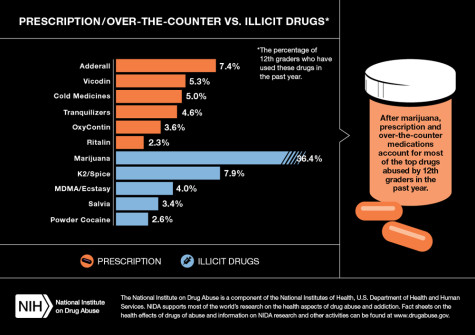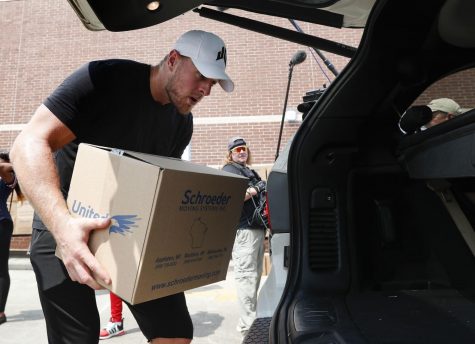Real ‘costs’ of drug use
“Pressure,” senior Alexandra Pantzis said. “The pressure to fit in and the pressure to be accepted, that is what pushes teens to use drugs. It’s hardly considered taboo anymore; it’s more ordinary, expected.”

According to the National Institute on Drug Abuse, 52 million people in the U.S. over the age of 12, have used prescription drugs non-medically in their lifetime.
The National Institute on Drug Abuse annually measures drug, alcohol and tobacco use and connected attitudes among eighth, tenth and twelfth graders in a survey called “Monitoring the Future.” The 2012 report showed an increase in marijuana use among adolescents as the risk perception decreased.
NIDA believes that adolescents regard occasional drug use as safe and harmless. Senior Garrett Alexander thinks that teenagers do not fully grasp the effects that drugs can have, saying the effects of drug use go beyond yellow teeth and secrets.
“The thing about using drugs is that they impact so many aspects of the body, mind and ultimately life,” he said. “Teenagers who use drugs don’t realize that puts a roadblock on their future, whether by law or direct consequence of the drug use. When someone is under the influence of drugs, they are more likely to do something that they wouldn’t normally do, which can get them in trouble or hurt.”
Alexander stated that there are major health risks that come with drug use, such as damage to internal organs like the liver, brain, lungs, throat and stomach. NIDA scientists agree that there is a link between drug use and serious mental illnesses such as schizophrenia and depression. The brain is maturing throughout adolescent years and drugs alter brain development and action, thus setting the user up for long-term effects and consequences.
“There’s no question about whether or not drug use negatively impacts lives,” Pantzis said. “It does, there’s no avoiding that. It’s a matter of how far it gets. Using drugs is a decision to sacrifice not only money and time but other things like innocence and safety. Aside from that, the user is making a habit of making bad choices which can end up hurting people close to them.”

NIDA research proves that an adolescent who partakes in drug use is more likely to suffer from social and medical issues, including addiction. The country’s largest non-profit organization that helps young people take part in social change, DoSomething.org, released statistics showing that teens whose parents talk to them regularly about the dangers of drugs are 42 percent less likely to use drugs. A quarter of teens report having these conversations.
“The increasing amount of teens using drugs is a direct result of parents no longer teaching their children what the repercussion costs of drug use are,” physics teacher Andrea Lippert said. “It’s a vicious cycle that leads to continuous poor choices.”
If you or someone you know is struggling with drug use, contact Substance Abuse and Mental Health Services Administration at 1-800-662-4357.







